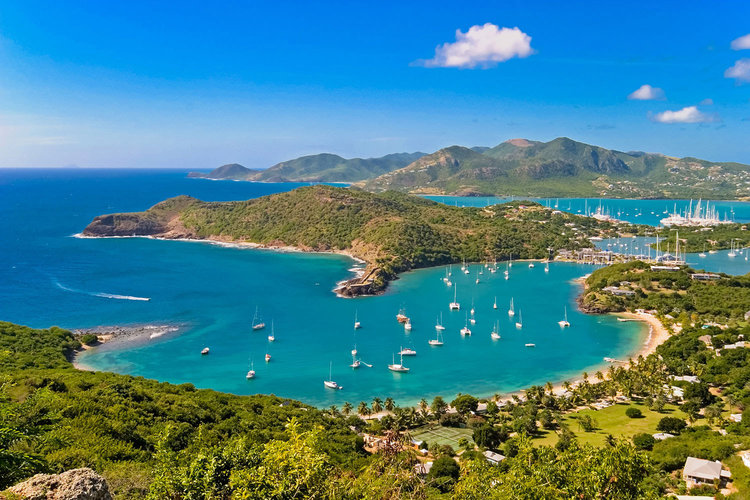
The islands had warm, steady winds, an intricate shoreline of safe provides hiding for, along with a protective, nearly unbroken wall of barrier reef.
It might create a perfect spot to hide a fleet. And thus in 1784 the legendary Admiral Horatio Nelson sailed to Barbuda and established Great Britain’s most significant Caribbean base.
Little did he realize that over two centuries later exactly the same unique qualities that attracted the Royal Navy would transform Antigua and Barbuda within the Caribbean’s premier tourist locations.
The twelve signs remain, they simply indicate various things.
The Trade Winds that when blew British males-of-war securely into British Harbour now fuel among the world’s foremost maritime occasions, Sailing Week. The expansive, winding shoreline that made Barbuda hard for outsiders to navigate is how present day trekkers encounter a significant insightful secluded, powdery soft beaches.
The barrier reefs, when the bane of marauding enemy ships, now attract snorkelers and all scuba divers from around the globe. And also the fascinating little island of Barbuda — when a scavenger’s paradise since several ships wrecked on its reefs — has become the place to find among the region’s most critical bird sanctuaries.
Location of Antigua and Barbuda:
Antigua and Barbuda are situated in the center of the Leeward Islands within the Eastern Caribbean, roughly 17 levels north from the equator. Towards the south would be the islands of Montserrat and Guadaloupe, and also to its northern border and west are Nevis, St. Kitts, St. Barts, and St. Martin.
Size:
Barbuda, the biggest from the British-speaking Leeward Islands, is all about 14 miles lengthy and 11 miles wide, encompassing 108 square miles. Its greatest point is Boggy Peak (1319 foot.), situated within the north western corner from the island. Barbuda, a set barrier island by having an section of only 68 square miles, lies roughly 30 miles due north. The country includes the small (.6 square mile) not inhabited island of Redonda, now a character preserve. The present population for that nation is roughly 68,000 and it is capital is St. John’s on Barbuda.
Climate in Antigua and Barbuda:
Temps generally are the mid-seventies during the cold months towards the mid-eighties within the summer time. Annual rain fall earnings only 45 inches, which makes it the sunniest from the Eastern Caribbean Islands, and also the northeast trade winds are nearly constant, flagging only in September. Low humidity year-round.
Although drier than other Caribbean islands, Antigua and Barbuda includes a tropical climate with low humidity. The hawaiian islands are tempered by ocean breezes and trade winds. Annual average precipitation is roughly 1,000 mm (39 inches) and also the hot months are between May to November. Climate ranges in St. John’s come from 21 levels Celsius (70 levels Fahrenheit) to 30 levels Celsius (86 levels Fahrenheit) with evening temps throughout the awesome season falling between 16 to 18 levels Celsius (60 to 65 levels Fahrenheit).
As you plan your visit to Antigua and Barbuda, a paradise nestled in the heart of the Caribbean, it’s essential to immerse yourself in the unique blend of natural beauty, rich history, and vibrant culture that these islands offer. From the pristine beaches of Barbuda, known for their pink sand and crystal-clear waters, to the historic sites of Antigua, including the famed Nelson’s Dockyard, there’s an adventure waiting for every type of traveler.
Discover Antigua and Barbuda’s Tourist Attractions
Explore the Antigua and Barbuda Tourism Board’s recommended sites, where you can dive into the islands’ tourism statistics to understand why these destinations are a magnet for travelers worldwide. Whether you’re interested in a leisurely tour around the islands, seeking to understand the intricate details of the Antigua and Barbuda Tourism Authority’s efforts in preserving the islands’ beauty and heritage, or looking to participate in the vibrant festivities and culinary experiences, these islands promise an unforgettable journey.
Engage with Nature and Adventure
For the adventure-seekers, Antigua and Barbuda’s tourist attractions offer a plethora of activities. Engage in world-class snorkeling and diving experiences around the barrier reefs, or take a hike through the lush, tropical landscapes. The islands are not just a haven for beach lovers but also a sanctuary for bird watchers and nature enthusiasts, with the Frigate Bird Sanctuary in Barbuda being a highlight.
Cultural Immersion and Culinary Delights
Immerse yourself in the rich cultural tapestry of Antigua and Barbuda. The islands’ tourism ministry and local associations work tirelessly to preserve and celebrate the vibrant heritage through music, dance, and art festivals. Culinary explorers will delight in the fusion of flavors found in local dishes, a testament to the islands’ history and cultural diversity.
Plan Your Visit
Before you embark on your journey, consult the Antigua and Barbuda Tourism Authority for the latest travel requirements and tips to make the most of your visit. Whether you’re drawn by the allure of secluded beaches, the call of the islands’ historical sites, or the warmth of the local communities, Antigua and Barbuda offer a slice of paradise for every traveler.
Remember, the beauty of Antigua and Barbuda goes beyond its scenic landscapes; it’s found in the warmth of its people, the richness of its history, and the serene escape it provides from the everyday. As you plan your trip, consider these islands not just as a destination but as an experience that will leave you with memories to cherish for a lifetime.